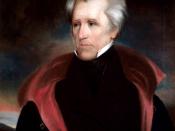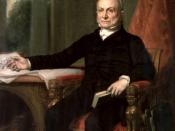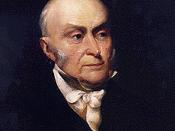A sense of unity filled the United States of America after they gained independence by winning the Revolutionary War. This sense of unity, however, did not last forever. Rather than having disputes with Britain, the United States began to have disputes among its three "sections" - the north, south, and west. Starting with the War of 1812, sectionalism began as a small rift but grew into a huge gap that separated the north, south, and west.
The end of the controversial War of 1812 did not end sectionalism. In fact, the War in general essentially served as an ignition to the division of the sections. Even further dividing the sections, the Protective Tariff of 1814 put a 25% tax on all imported goods. This means that a roll of cloth from Britain that originally sold for $5 would now cost $6.25. This greatly helped the North - British factories often sold goods cheaper than the factories in New England did in order to sell more.
Due to the tariff, the North now had the best price and farmers in the west and south were forced to buy from New England factories. To help out the south, the government would spend some of their profits from the tariffs on transportation improvements in the south and west. The south and west, however, was angered by the tariff. The transportation improve-ments, they argued, did not help them significantly. Overall, they felt the north was benefiting from the tariff at their expense.
Sectionalism was such a widespread and realized problem that three sectional representatives - one for each section - emerged. Henry Clay spoke for the west. Although he was a sectional leader, Clay has been called one of the most nationalistic leaders in America's history. Clay had always tried to improve national unity,


